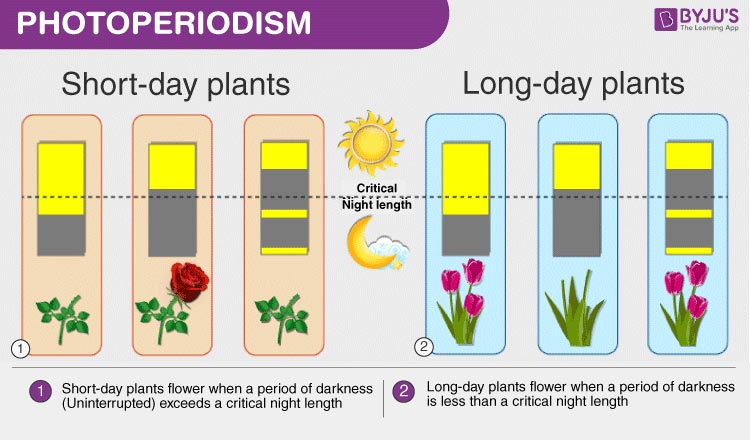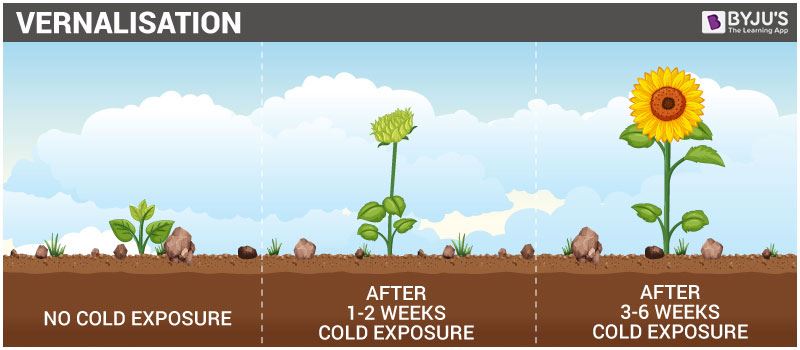Table of Contents
Photoperiodism
Photoperiodism is the response of plants and animals to the relative lengths of dark and light periods. In plants, the most remarkable photoperiodic response is the commencement of flowering. The photoperiodism was observed first in Maryland Mammoth variety of tobacco.

Based on the duration of light on the plant, it is further classified into three categories:
- Long-day plants- Example: Spinach, hibiscus, etc.
- Short-day plants- Example: Sugarcane, cotton, etc.
- Day-neutral plants- Example: Tomato, rose, etc.
Apart from plant species, certain birds and animals also respond during certain times of the year by showing certain behaviours. A number of biological and behavioural changes are dependent on photoperiodism including migration, reproduction, the changing of coats, etc.
For example, the bird nightingale sings more frequently during the breeding seasons.
Also Read: Photomorphogenesis
Vernalisation

Vernalisation is the process of accelerating the ability of flowering in plants by exposing them to cold temperatures. In this technique, cold treatment is given especially to flower buds, seeds or seedlings.
This type of process is mainly carried out for promoting early flowering in plants. In the year 1920, a Russian scientist T.D. Lysenko first introduced the term vernalisation.
The process of Vernalisation was introduced on several species of perennial and biennial plants in order to produce flowers at the low temperature ranging between 1oC to 12 oC.
Recommended Video:

Difference between Photoperiodism and Vernalisation
Tabulated below are the important differences between photoperiodism and vernalization:
|
Photoperiodism |
Vernalisation |
|
Induction of flowering in plants by exposing them to light and dark photoperiods. |
Induction of flowering in plants by exposing them to cold temperatures. |
|
It provides stimuli in addition to flowering induction. |
It only prepares the plant to perceive flowering stimuli. It does not induce flowering. |
|
The light stimulus in photoperiodism is only received by green leaves. |
The cold treatment stimulus is received by leaves, embryo, and meristem. |
|
Photoperiodism is mediated by a hypothetical hormone Florigen. |
Vernalisation is mediated by a hypothetical hormone vernalin. |
|
2-3 photoperiods are enough to induce flowering. |
Exposure to low temperatures for 50 days induces flowering. |
|
Gibberellic acid can replace exposure to long photoperiods only in long-day plants. |
Gibberellic acid can replace cold treatments to induce vernalisation in all plants. |
|
Photoperiodism can be nullified by exposing to unfavourable photoperiods. |
Vernalisation can be nullified by exposing them to high temperatures. |
Also Read: Seed Dormancy
For more detailed information on photoperiodism and vernalisation, keep visiting BYJU’S website or download BYJU’S app for further reference.


Comments